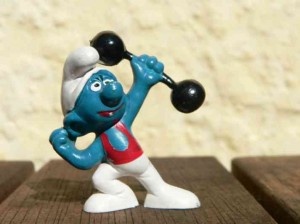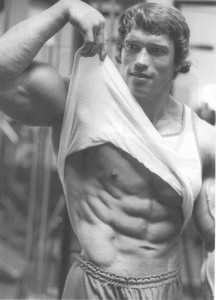 Like many gym goers, you’re probably looking to add some bulk in the form of muscle.
Like many gym goers, you’re probably looking to add some bulk in the form of muscle.
It’s true that all of us have different bodies and have experienced different fitness journeys - but there are some common threads that can help create an effective foundation for building muscle.
- Thou shalt perform 8 - 12 repetitions of each exercise. Different repetition ranges target different goals; for purposes of building size and strength, most trainers recommend a rep range of between 8 and 12. Lower ranges target strength and higher ranges target endurance.
- Thou shalt perform each set until failure. Simply put, this means that you’d be unable to perform an additional repetition at that resistance level without compromising form. If you are targeting 10 repetitions, this would mean that you couldn’t do an 11th. If you can, increase the resistance.
- Thou shalt use an overloading stimulus. This means subjecting the muscles to more than they’re capable of handling. When you do that, you’ll be creating tiny tears in your muscles, which then must be rebuilt back up stronger than they were before.
- Thou shalt progressively overload. Keep in mind, your overloading stimulus won’t be so overloading after a few weeks or a month. As your muscles grow, you’ll need to up the resistance to keep your muscles growing. You’ll need to continue doing this until you reach your goal.
- Thou shalt use free weights. If you’re just getting started with building muscle, you can get great results with your body weight (i.e., push-ups at home) or by using machines. But to really progress to create athletic-level muscle size and strength, you’ll need to hit the free weights. They allow you to progress to higher levels of resistance without the balancing assistance and limitations of strength training machines.
- Thou shalt eat before and after exercise. Before your workout, consume some sort of complex carbohydrate to ensure a steady release of energy during your workout. It will help you power through the routine. After your workout, consume simple carbohydrates (the resulting spike in your blood sugar will quickly get the glucose from the carbohydrates into your muscle cells where they’re needed) and protein.
- Honor thy body with rest and recovery. After you’ve created the tiny tears in your muscle, you must back off and allow your body a chance to rebuild them. This process makes the muscles stronger and bigger.
- Thou shall still do cardio. The truth is, cardiovascular exercise is great for all people, regardless of their goals. Because you don’t need the additional calorie burn, you’re doing cardio for the overall health benefits; as such, limit cardio to a handful of sessions per week that last less than 30 minutes. High intensity interval training is best-suited for individuals looking to retain and/or build muscle.
- Thou shalt consume sufficient calories, protein, carbohydrates and fat. Remember, you can’t build something out of nothing! To add any type of mass, you must consume more calories than required to maintain your body weight. Most trainers recommend a calorie surplus of 250 - 500 calories per day. Proteins provide the amino acids that muscles need to generate new tissue. Carbohydrates and dietary fats, on the other hand, provide the energy for the process to occur. Without these in place, your results will be hampered.
- Thou shalt assess progress. Every few weeks or perhaps once a month, look at your progress. Take measurements including muscle size, waist size and so on. Compare pictures. And then adjust your program accordingly. If you notice that you’re gaining fat, for example, decrease your calorie surplus accordingly.
Do you have any additional commandments for building muscle size? Share them in the comments below.
P.S. If you’re looking to add muscle mass, download Davey Wavey’s Foolproof Guide to Building Muscle. It’s a guaranteed, step-by-step guide to achieving your size and strength goals.
















